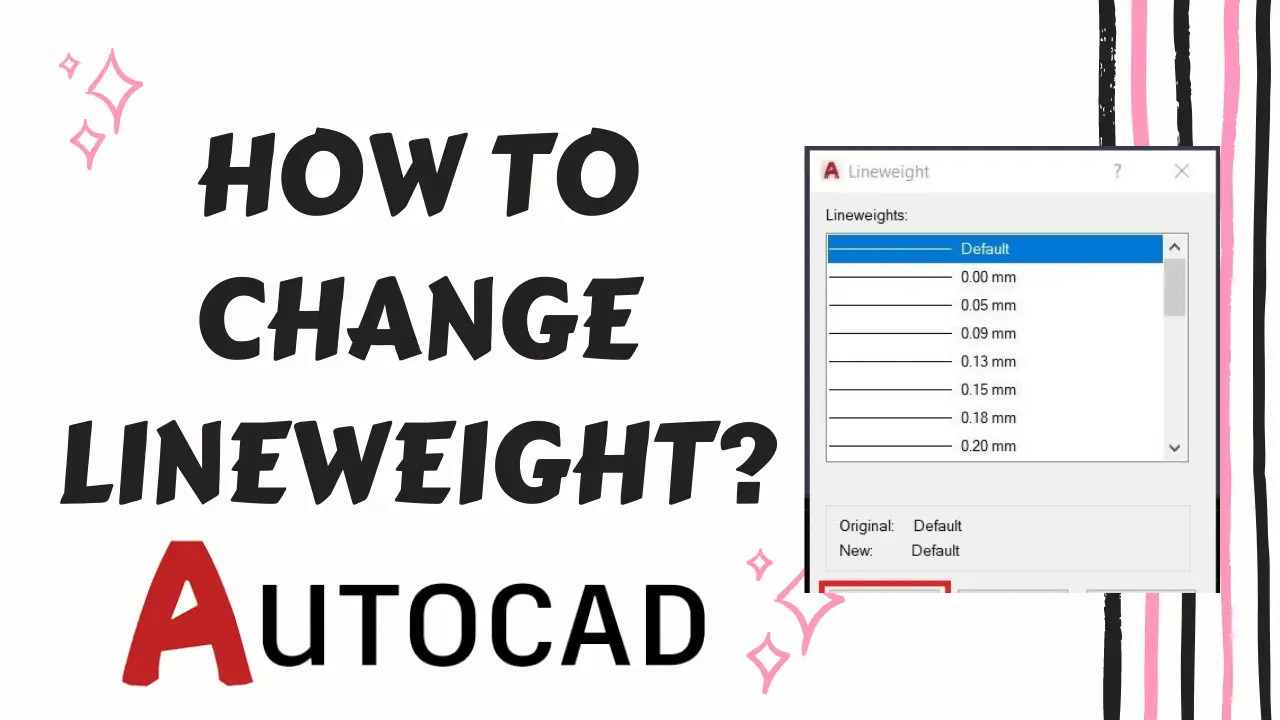


Line thickness is also not recognized in the output CAD file Description The editor has a lot more functions than I've shown you here, but these Iįeel, are some of the more important ones to get you started.Problem: The Export to CAD Tool exports dashed lines defined in the seed file as continuous. Well that's about it in regards to the Visual LISP Editor. The "Watch" window as the program does it's thing. Hey, it's running automatically! Take note of the variables changing in "Debug" pull down menu and then "Animate". "Ctrl-Shift-F9" to clear all breakpoints. Notice how the values of the variables change as the program proceeds.

Now run the program again, still "single" stepping through. Repeat this process for all the other variables until the Watch" dialog looks like this : Note how the variable "diam" is listed along with it's present value. Select the "diam" variable and then select the "Add Watch" toolbar button :

"single step" through your whole program : Execution should stop at the Breakpoint mark. This places a "Breakpoint" into your program. Talking about debugging, Place the cursor in front of the (defun C:SLOT () statement and press
AUTOCAD CHANGE CURSOR COLOR CODE
Only the lines of code you selected will be run, Great for debugging. Select the lines ofĬode you would like to run and choose the "Load selection" YouĬan also just run a selection of code if you desire. Should now run, switching over to the AutoCAD screen when required. To run the routine, type this at the Console prompt : _$ (c:slot) To load the "Slot" lisp routine, select the "Load active edit window" toolbar button : Precedes or follows a word, or is within a word, VLISPĪny AutoLisp function? Double-click on the function name to select it, and Precedes an open parenthesis, VLISP selects all theįollowing text up to the matching close parenthesis.įollows a close parenthesis, VLISP selects all preceding text up to The amount of text selected depends on the location of your cursor. The simplest method to select text is to double-click your left mouse button. Unrecognized items (for example, user variables) The default color scheme is shown in the following table. This helps you detect missing quotes or misspelled function names. VLISP assigns every type of element its own color. As soon as you enter text in the VLISP Console or text editor windows, VLISP attempts to determine if the entered word is a built-in AutoLISP function, a number, a string, or some other language element. The coding should look like this in the text editor :īefore we go any further, let's have a wee chat about the colors. (setq pt1 (getpoint "\nInsertion point:")) (setq diam (getdist "\nSlot Diameter : ") Choose File New File and then copy and paste this coding into the text editor :


 0 kommentar(er)
0 kommentar(er)
